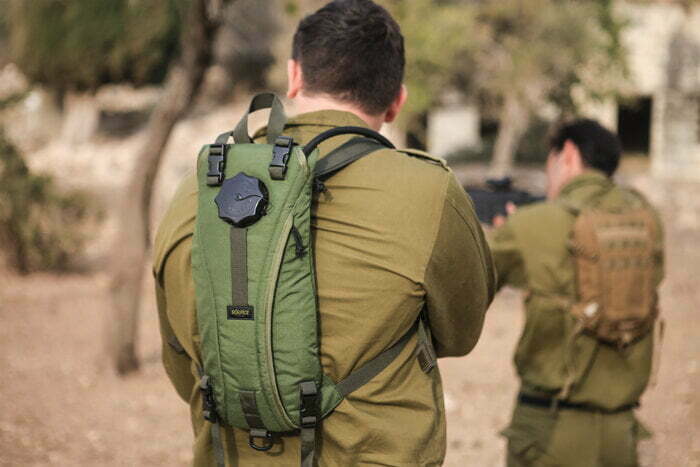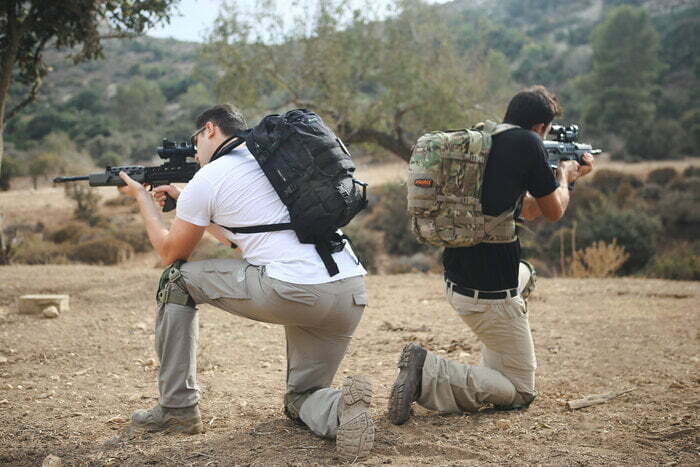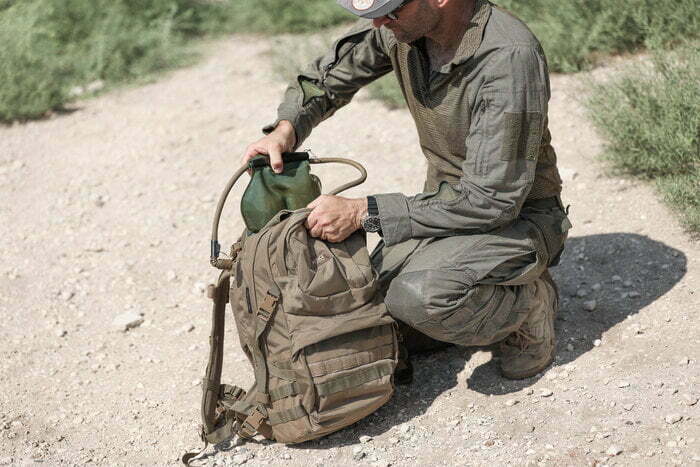Height And Weight Requirements In The US Military
When you’re trying to enlist in the US Army, your height and weight can be a deciding factor: the US military has strict regulations in place regarding height and weight limits.
Therefore, some strict regimes and diets must be kept to reach and maintain the desired weight. Some exceptions may allow you to stay in the army for both height and weight limits if you don’t meet these requirements.

All You Need To Know About Height Limits In The Army
Let’s start with height limits in the army. You’re born with your height, and there is no such way to control it like you can for your weight. Nevertheless, the US army has strict height limits, and for very good reason also. Keep on reading to find out.
Why Are Their Height Limits?
There are height restrictions in the army quite simply because the Army doesn’t have an unlimited budget or time to make custom-made uniforms for each recruit that falls outside the height range. Furthermore, in the air force and navy, the jobs required will be challenging to carry out should someone fall outside the height limit, such as when working in tanks and airplanes.
How Are Height Measurements Taken?
Height measurements are taken by Army personnel to determine an applicant’s physical condition before being sworn in. Before they become a new recruit, they must pass the height measurement requirement as part of the Military Entrance Processing Station (MEPS).
Height measurements are rounded up or down to the nearest whole digit. This means that if you measure at 60.9 inches, your height will be noted as 61 inches. Or if you’re 80.5 inches, it will be rounded up to 81 inches. Height measurements are taken every 6 months to ensure compliance with the restrictions.
Are There Any Growth Allowances Given?
Given that you can’t control your height and that someone can be recruited into the Army as early as 17 years old, there have been some cases of people being allowed to stay in the military despite exceeding the height requirements.
For example, the famous basketball player and 2-time Olympic gold medal winner David Robinson first entered the US Navy when he was 80 inches tall, just one inch over the Navy’s height restriction at that time of 80 inches. However, he was granted an allowance due to the assumption that he wouldn’t grow much more. That turned out to be a huge miscalculation as Robinson ended up growing to around 85 inches tall, meaning he well-exceeded the height standard. Rather than being discharged, he was able to serve active duty while growing his basketball career and later served in the Naval Reserves helping with recruitment and campaigning.
While Robinson still had some active part in the Navy, his height prevented him from later serving on any US navy ships. Better yet, this is unlikely to happen nowadays, and there are not many known cases of exceptions being given to the height restrictions. Height limits, therefore, are something to be aware of when planning on joining the US military.
Army Height Requirement For Men
The ideal height requirement for men in the military is between 60-80 inches / 152-203 cm. Anyone above or below this requirement is likely to get rejected.
The height limits are standard, and anyone within this height range can get accepted as long as their weight corresponds to the correct weight limit.
Army Height Requirement For Women
The military requires all women to be 58-80 inches / 147-203 cm. There is only a slight difference of 2 inches between height requirements for men.
The height limits are standard, and anyone within the required height range can get accepted as long as their weight corresponds to the correct weight limit.

All You Need To Know About Weight Limits In The Army
Weight requirements in the army are slightly more complicated than height limits. They consider the gender, age group, and height of someone to determine whether they’re at the desired weight.
Why Are There Weight Limits?
Weight limits in the Army are there to ensure that everyone is as physically fit as can be. With over 250,000 people to keep track of, ensuring that everyone is of a healthy weight is a good indicator of someone’s overall health. Given that most Army jobs require lots of strength and mobility within confined spaces such as within an aircraft or tank, being overweight will simply prevent someone from doing their job. Moreover, Infantry positions require someone to carry heavy backpacks, which can damage someone’s bones if they’re overweight. Finally, the Army likes to simplify things such as with equipment and uniforms. Ensuring that everyone is within the same percentile of weight range allows for this simplicity to continue.
How Are Weight Limits Taken?
Like the height measurements, weight measurements are taken as part of the MEPS, and then every 6 months once they’re sworn in as a new recruit. Weight measurements are rounded up or down to the nearest whole digit. So if someone weighs 124.6lb, this will be written down as 125lb. There are also body fat percentage tests that may be carried out should you exceed the maximum limit for being in the Army. This is also known as the weight waver.
What’s The Weight Waver Allowance?
If a new applicant in the army exceeds the maximum weight limit, they may still be sworn in as a new recruit so long as they’re within the maximum body fat percentage for their age and gender.
In general, the strenuous physical Army training is more than enough to ensure that soldiers stay within the weight and body fat composition. But if you’re planning on becoming a new recruit, it’s important to start training early on to ensure that your weight requirements will be met once you take the MEPS.
Weight Limit Requirement For Men
The weight limits in the army are higher for new recruits than those already serving in the military. The chart below refers to those that are already serving in the military. If you’re a new recruit, the weight limit is slightly higher. But don’t let that fool you. Once you’re enlisted, you’ll need to lose those pounds quickly, so you might as well start that way!
| Height (In Inches) | Minimum Weight | Age 17 - 20 Max Weight (in lbs.) | Age 21 - 27 Max Weight (in lbs.) | Age 28 - 39 Max. Weight (in lbs.) | Age 40+ Max Weight (in lbs.) |
| 58 | 91 | ||||
| 59 | 94 | ||||
| 60 | 97 | 132 | 136 | 139 | 141 |
| 61 | 100 | 136 | 140 | 144 | 146 |
| 62 | 104 | 141 | 144 | 148 | 150 |
| 63 | 107 | 145 | 149 | 153 | 155 |
| 64 | 110 | 150 | 154 | 158 | 160 |
| 65 | 114 | 155 | 159 | 163 | 165 |
| 66 | 117 | 160 | 163 | 168 | 170 |
| 67 | 121 | 165 | 169 | 174 | 176 |
| 68 | 125 | 170 | 174 | 179 | 181 |
| 69 | 128 | 175 | 179 | 184 | 186 |
| 70 | 132 | 180 | 185 | 189 | 192 |
| 71 | 136 | 185 | 189 | 194 | 197 |
| 72 | 140 | 190 | 195 | 200 | 203 |
| 73 | 144 | 195 | 200 | 205 | 208 |
| 74 | 148 | 201 | 206 | 211 | 214 |
| 75 | 152 | 206 | 212 | 217 | 220 |
| 76 | 156 | 212 | 217 | 223 | 226 |
| 77 | 160 | 218 | 223 | 229 | 232 |
| 78 | 164 | 223 | 229 | 235 | 238 |
| 79 | 168 | 229 | 235 | 241 | 244 |
| 80 | 173 | 234 | 240 | 247 | 250 |
Weight Limit Requirement For Women
The chart below also references soldiers that are already enlisted into the army. New recruits get some small extra allowance. Note that both for men and women, your height and age remain set. Your weight needs to slot into the right gap according to your specific height and age.
| Height (in inches) | Minimum Weight (in lbs.) | Age 17 - 20 Max. Weight (in lbs.) | Age 21 - 27 Max. Weight (in lbs.) | Age 28 - 39 Max. Weight (in lbs.) | Age 40+ Max Weight (in lbs.) |
| 58 | 91 | 119 | 121 | 122 | 124 |
| 59 | 94 | 124 | 125 | 126 | 128 |
| 60 | 97 | 128 | 129 | 131 | 133 |
| 61 | 100 | 132 | 134 | 135 | 137 |
| 62 | 104 | 136 | 138 | 140 | 142 |
| 63 | 107 | 141 | 143 | 144 | 146 |
| 64 | 110 | 145 | 147 | 149 | 151 |
| 65 | 114 | 150 | 152 | 154 | 156 |
| 66 | 117 | 155 | 156 | 158 | 161 |
| 67 | 121 | 159 | 161 | 163 | 166 |
| 68 | 125 | 164 | 166 | 168 | 171 |
| 69 | 128 | 169 | 171 | 173 | 176 |
| 70 | 132 | 174 | 176 | 178 | 181 |
| 71 | 136 | 179 | 181 | 183 | 186 |
| 72 | 140 | 184 | 186 | 188 | 191 |
| 73 | 144 | 189 | 191 | 194 | 197 |
| 74 | 148 | 194 | 197 | 199 | 202 |
| 75 | 152 | 200 | 202 | 204 | 208 |
| 76 | 156 | 205 | 207 | 210 | 213 |
| 77 | 160 | 210 | 213 | 215 | 219 |
| 78 | 164 | 216 | 218 | 221 | 225 |
| 79 | 168 | 221 | 224 | 227 | 230 |
| 80 | 173 | 227 | 230 | 233 | 236 |
Height and Weight Requirements For The Navy And Air Force
Height and weight requirements for the US Navy and Air Force vary slightly and are slightly stricter. While the reasons for needing height and weight limits are the same, the limits are slightly stricter.
Navy Weight And Height Requirement
The Navy has strict height, and weight standards and all officers are tested twice a year through a physical fitness test to check they meet the required limits. If weight standards aren’t met, they will be measured for body fat percentage to check if they pass the test.
To be an applicant for the Navy, you must be between 57-80 inches tall. The weight standards are about your height and gender. For example, if you’re 60 inches tall and a male, you must be 141lb maximum. If you’re 70 inches and a female, you cannot weigh more than 177lb. The weight range is from 127lb to 241lb but depends on your height and age.
Height And Weight For Air Force
Height and weight requirements for air force pilots are stringent. All pilot candidates must be:
- No less than 64 inches short and 77 inches tall when standing
- Within 34-40 inches tall when sitting
- Weighing within 160-231 lb
Other requirements for enlisting into the air force include having a perfect color vision, no history of hay fever or allergies, and distance visual accuracy.

How To Keep Fit Before/During The Military
Keeping fit is one of the most crucial ways you can prepare before enlisting into the US military, and it’s one of the most important things to be aware of once you’re enlisted. Besides physical training and exercise to ensure you pass all the required tests, staying hydrated during this time is essential. You can train while staying hydrated by using a hydration bladder, as the bladder is strapped onto your back and your arms remain free.
SOURCE’s tactical hydration packs mirror those that you will use in the Army and are the perfect way to start training before you enter the Army. You can strap the hydration pack on your back and train in all weather conditions, arms free and fully hydrated.





 Facebook
Facebook google
google